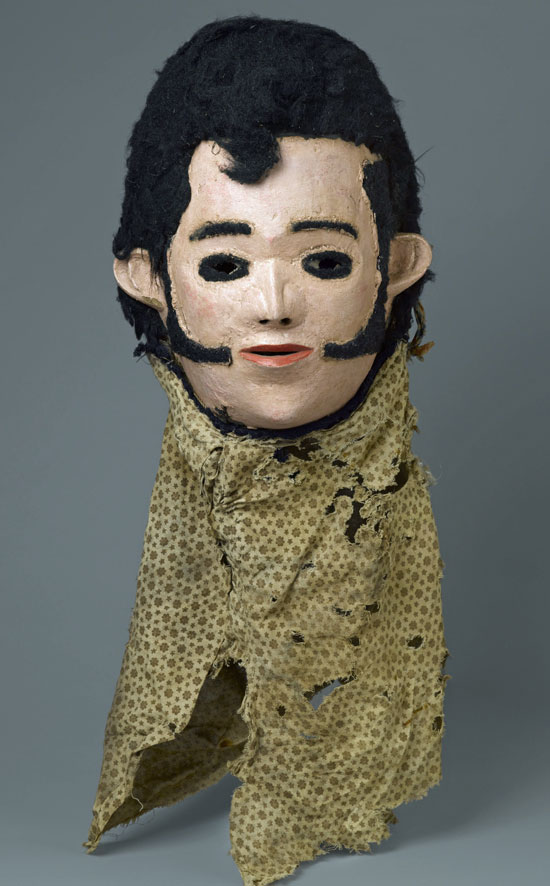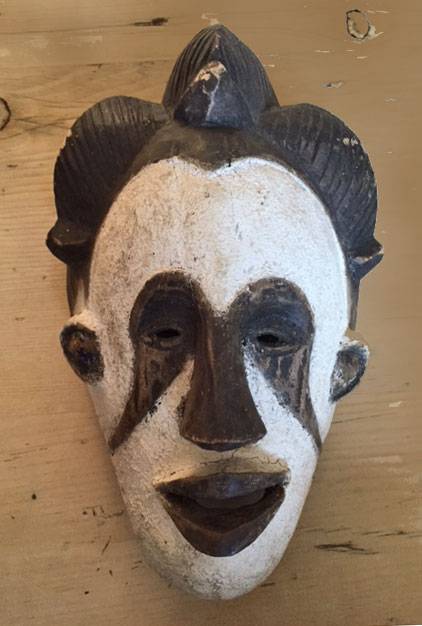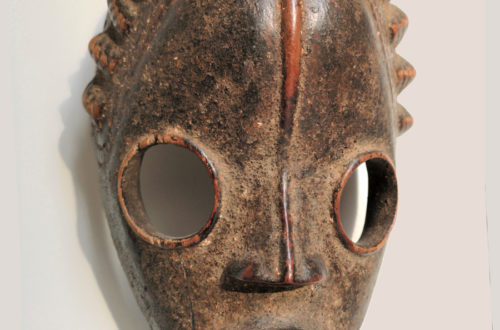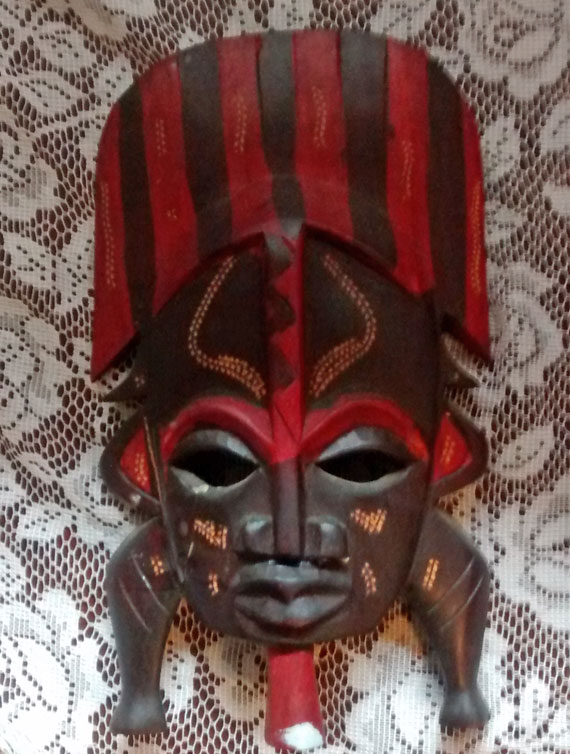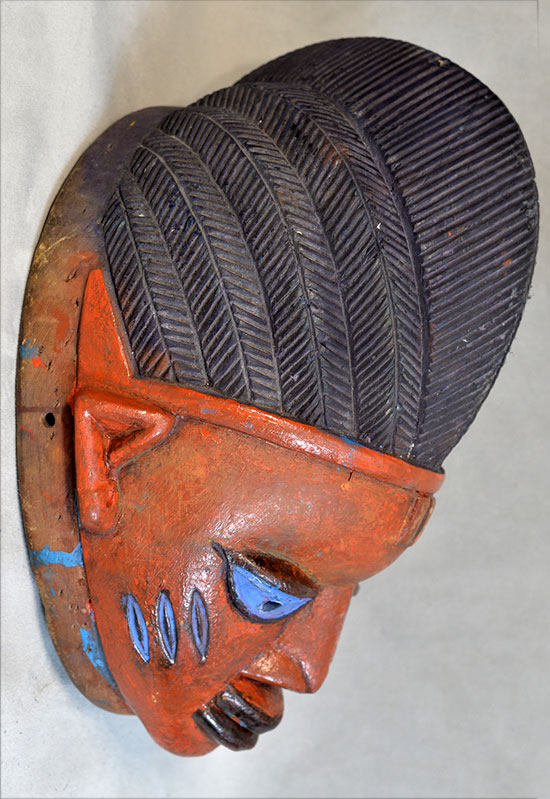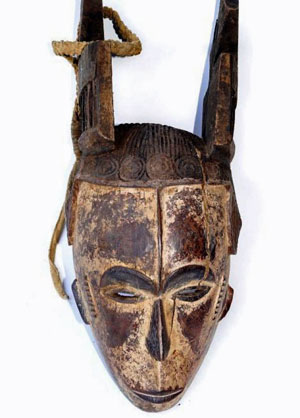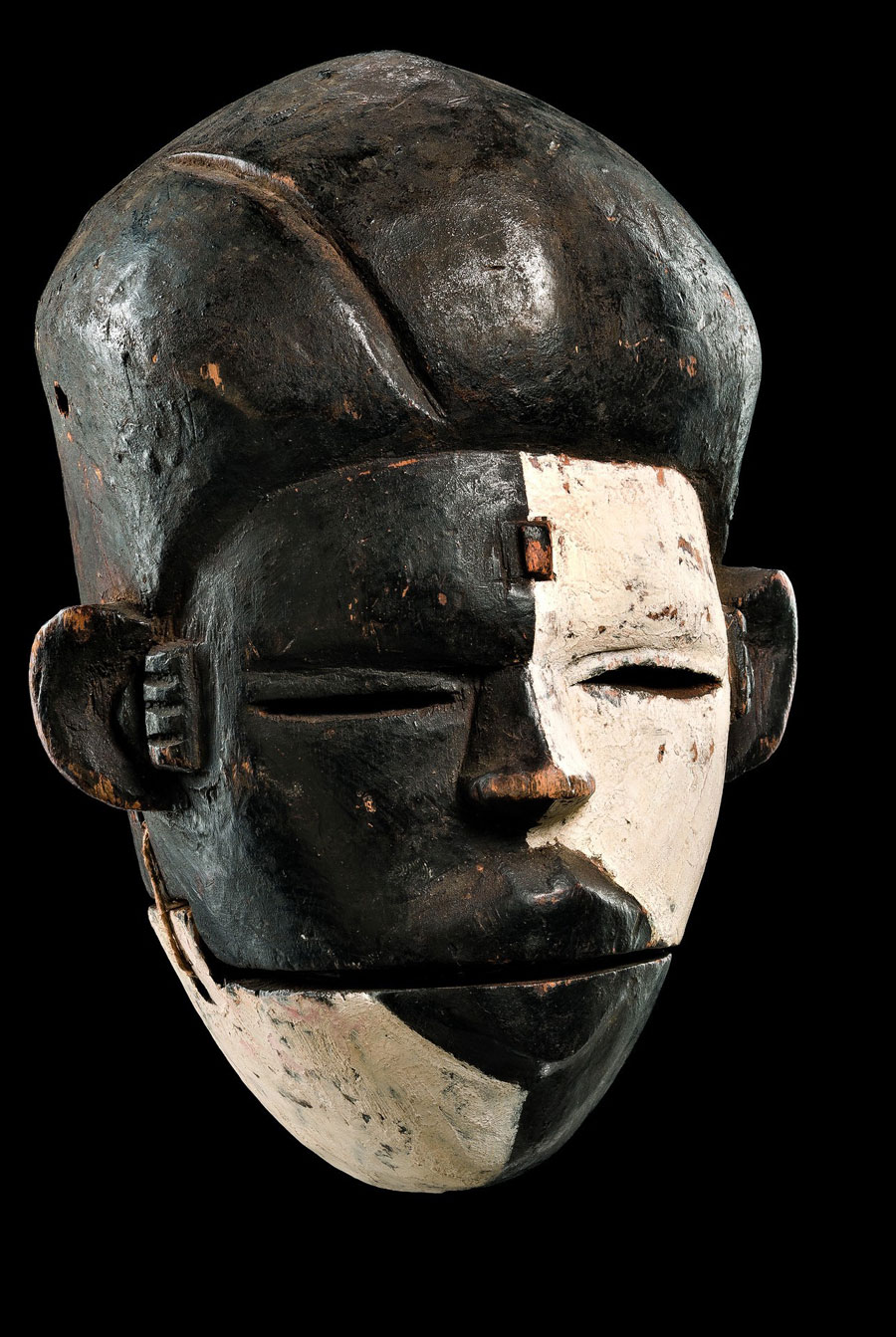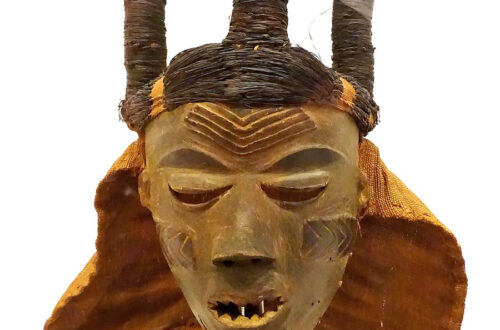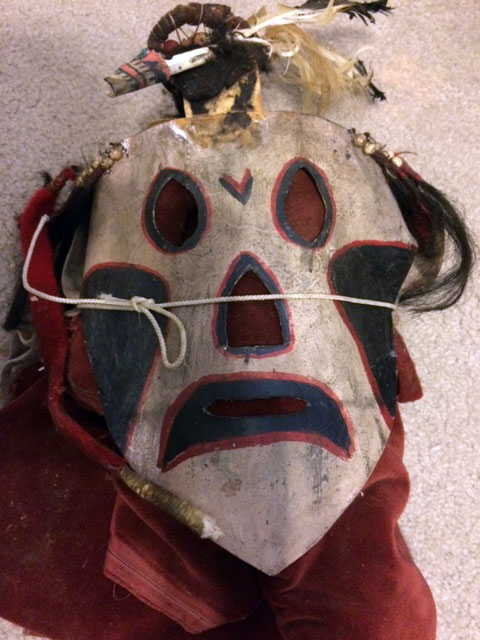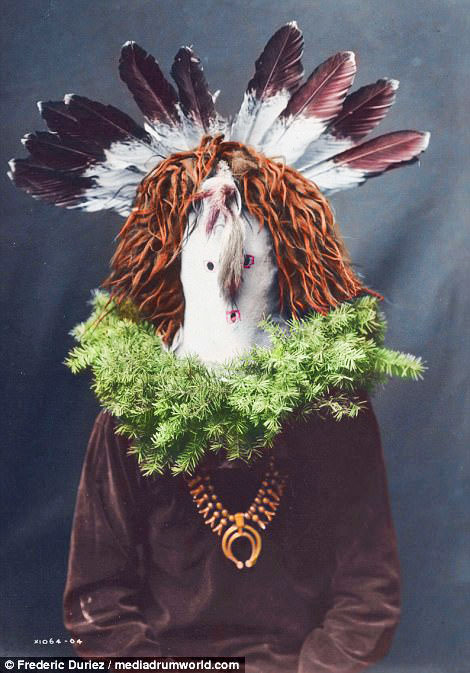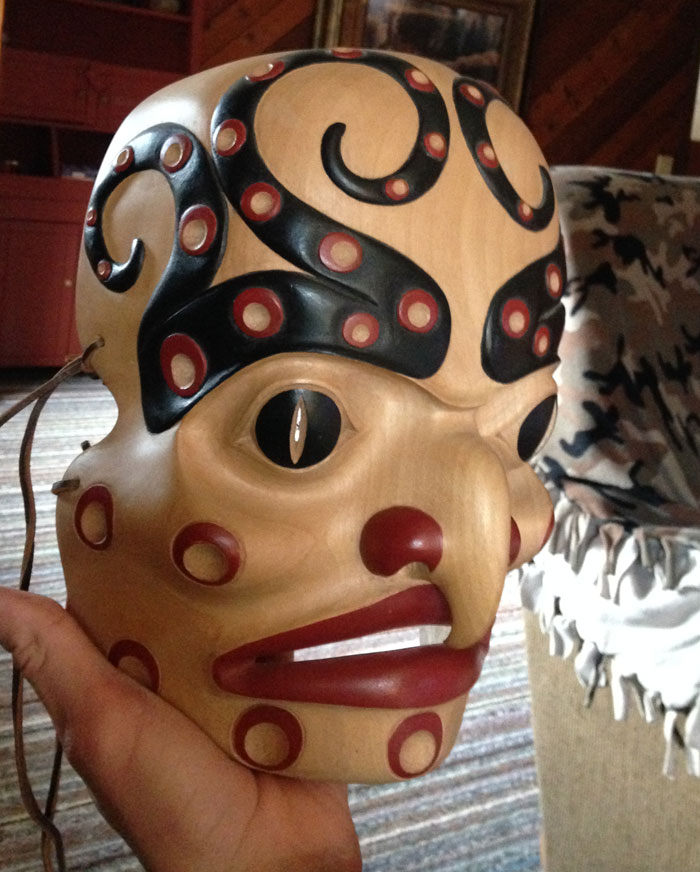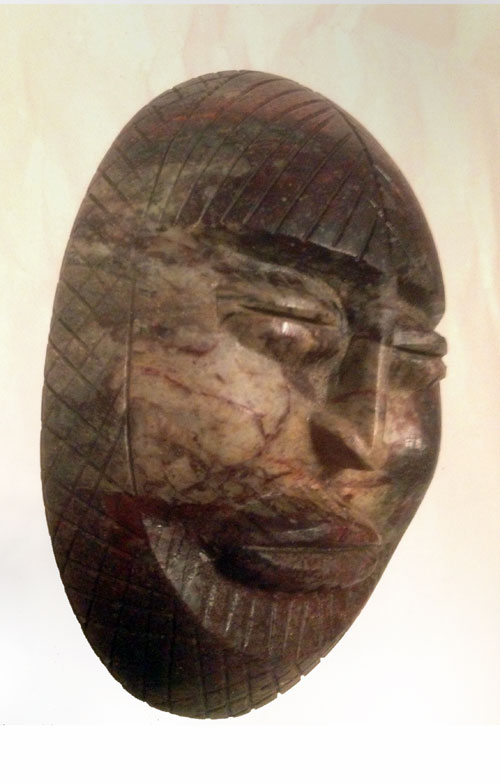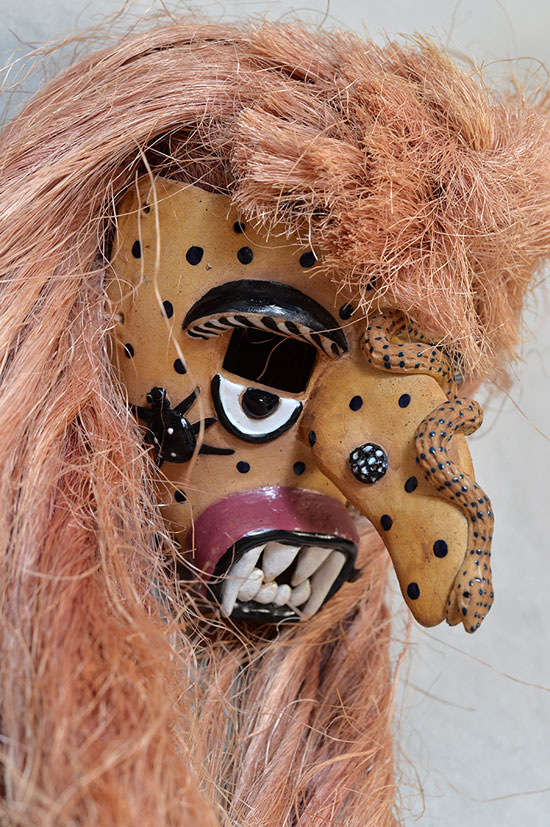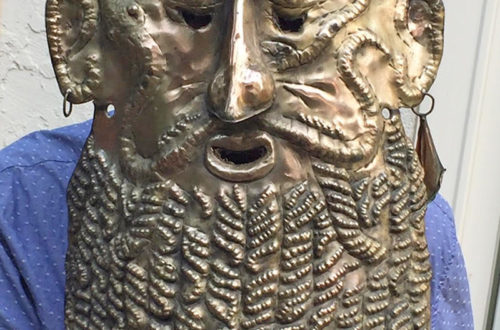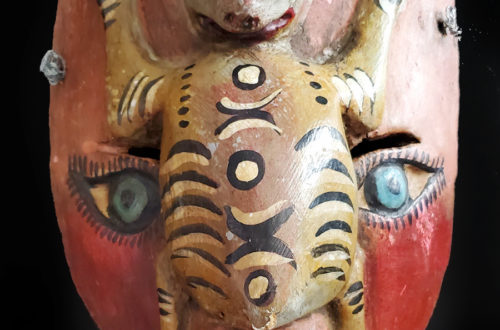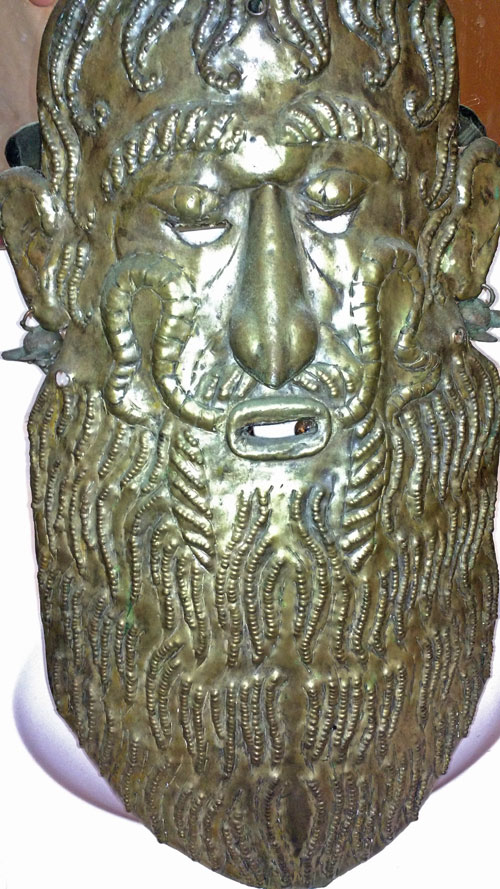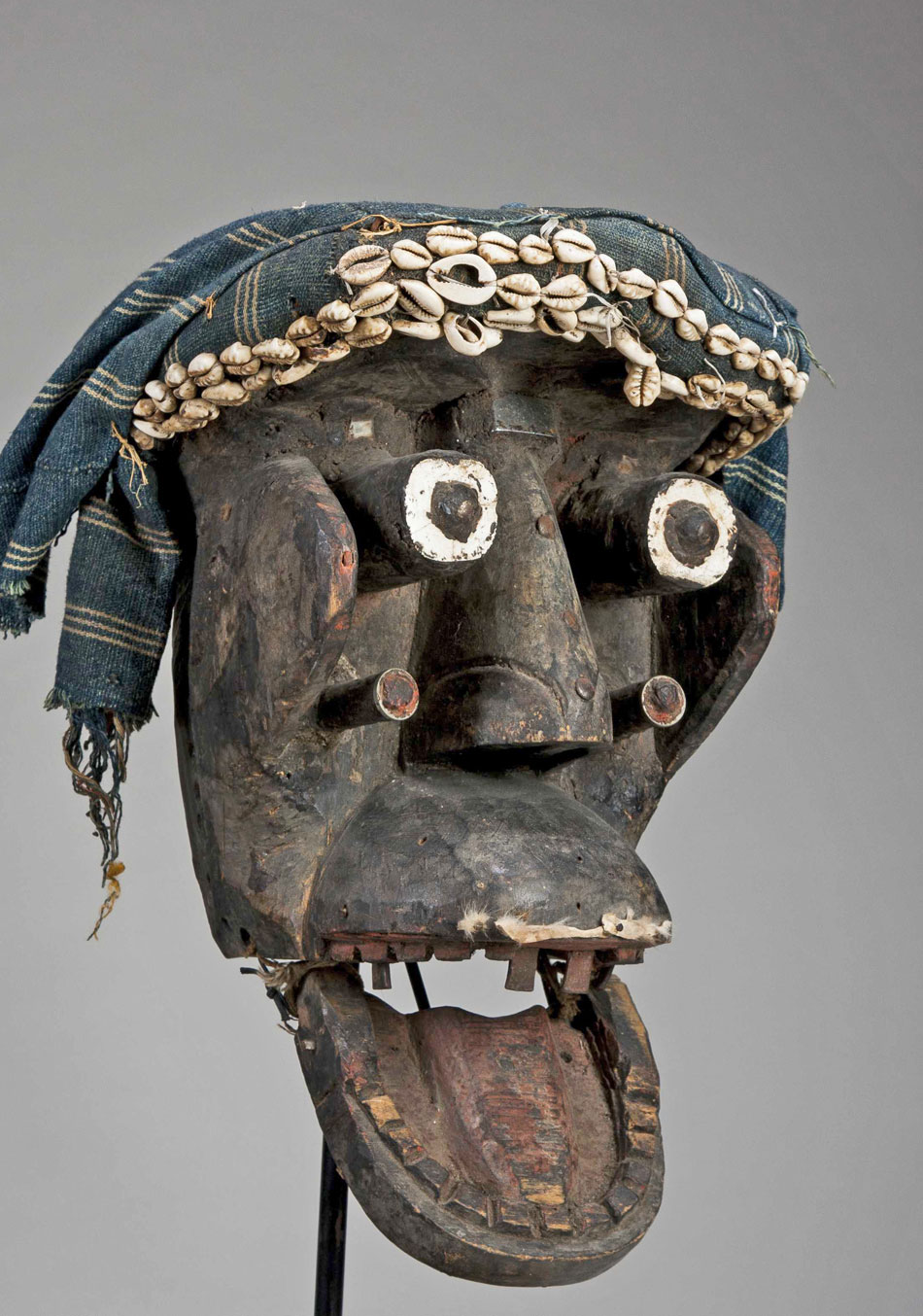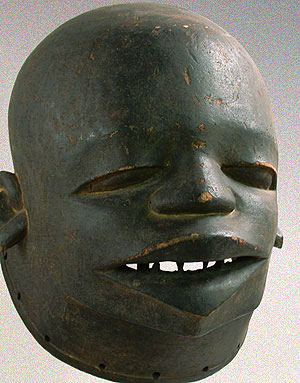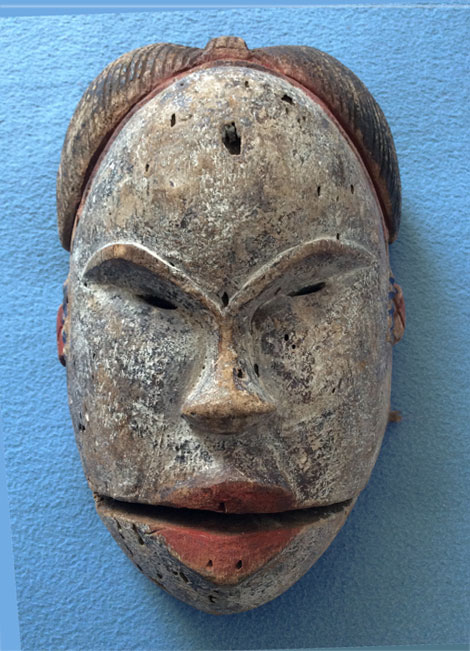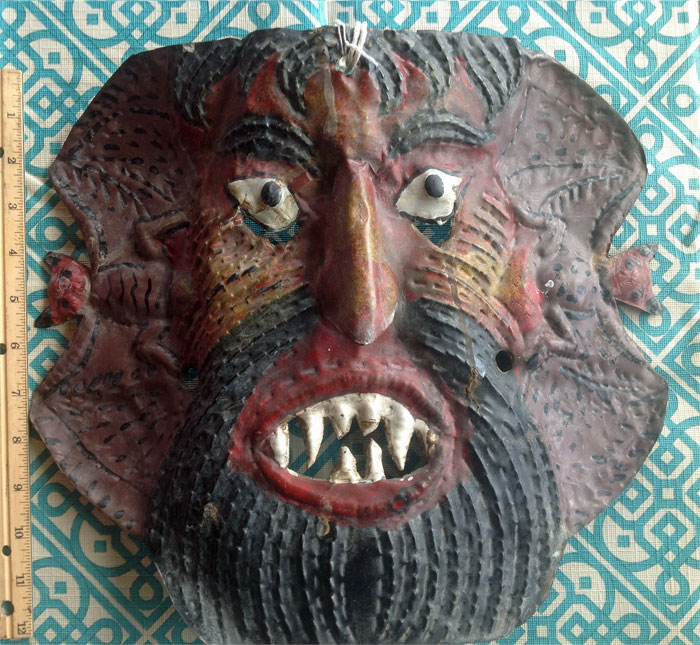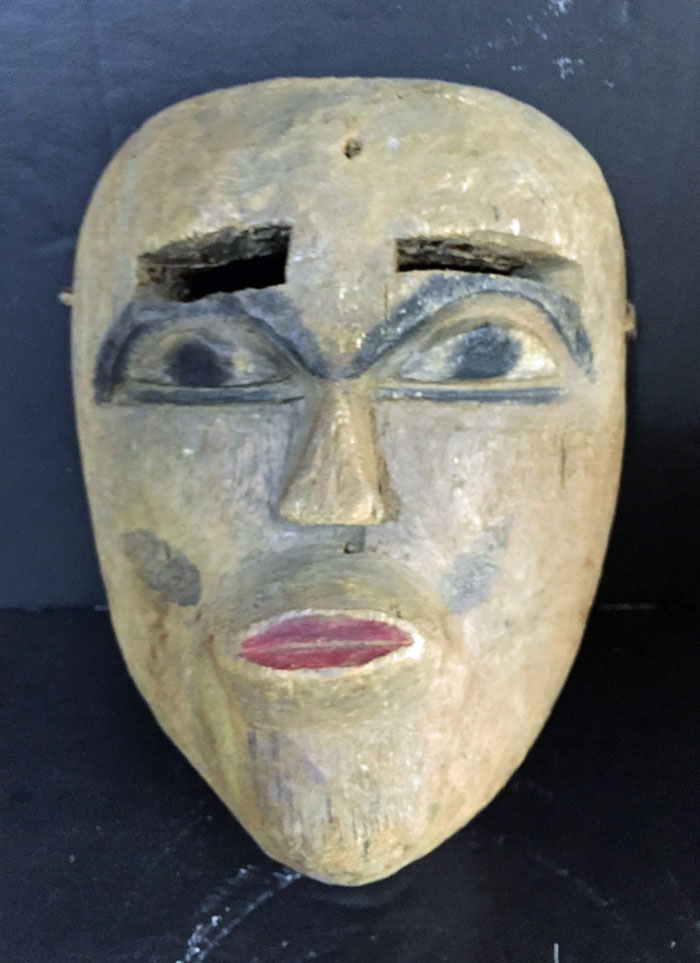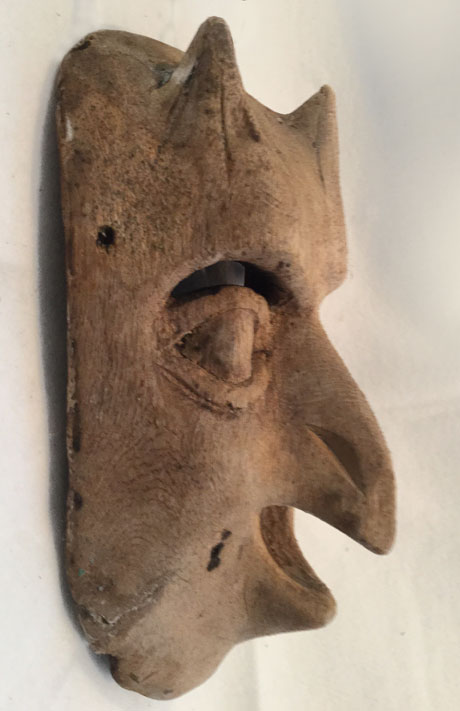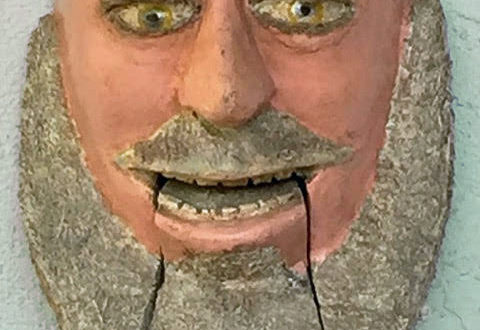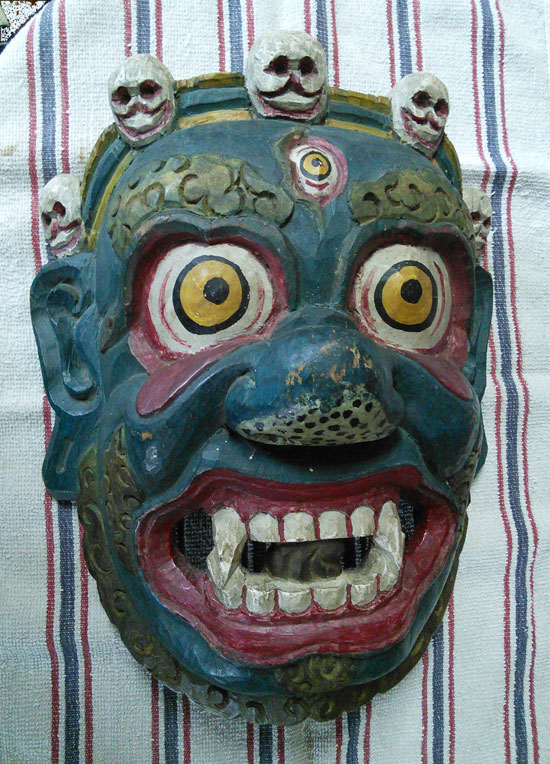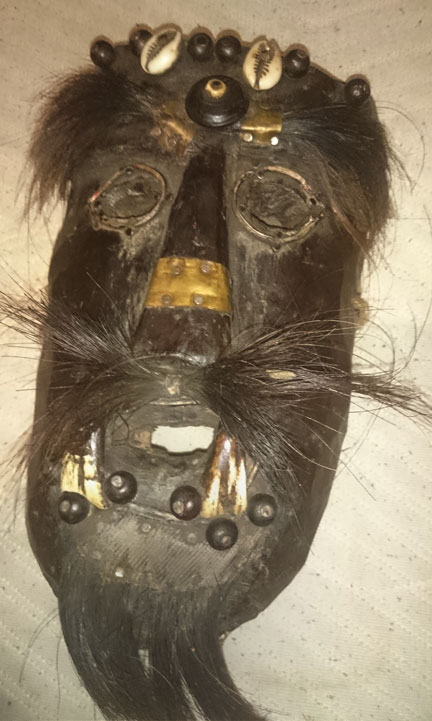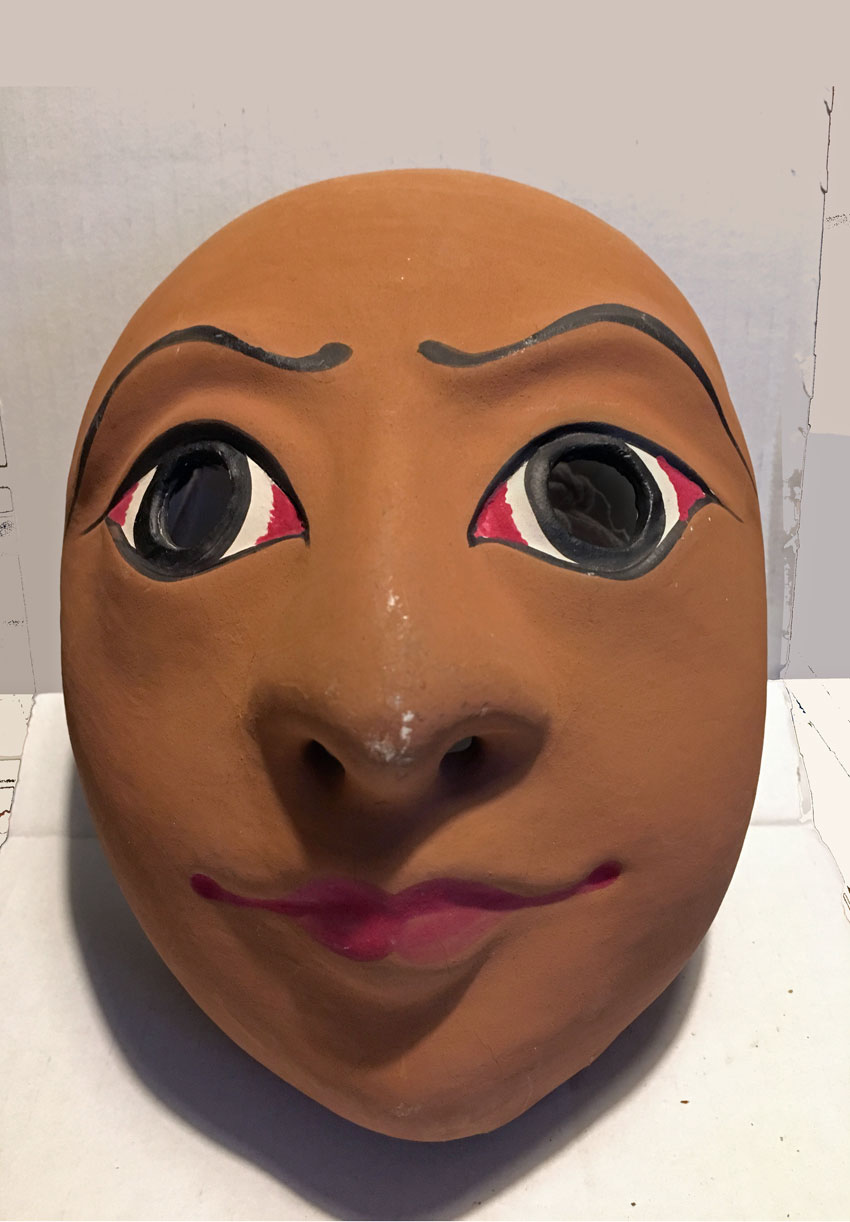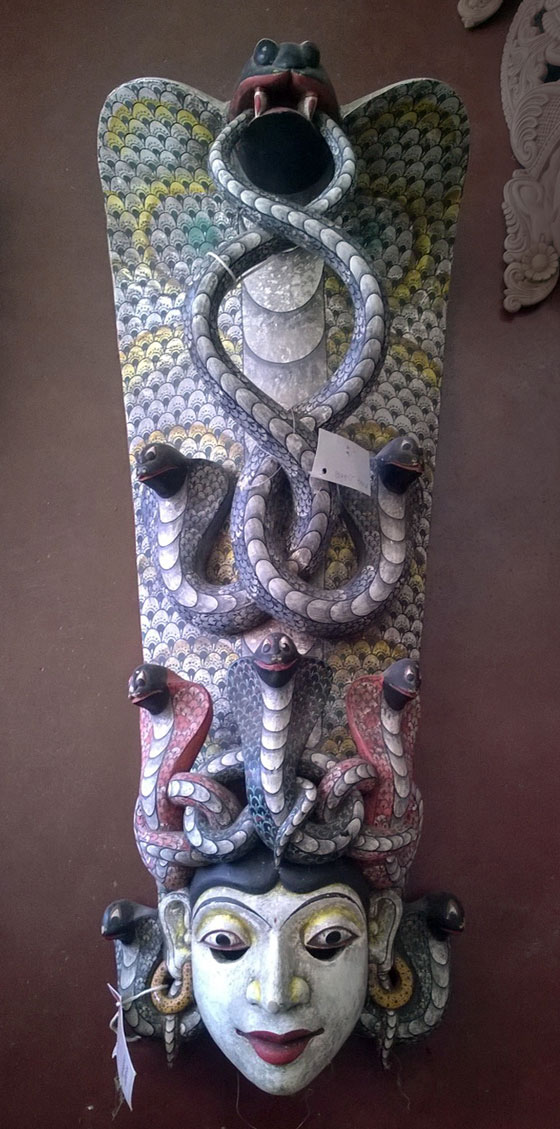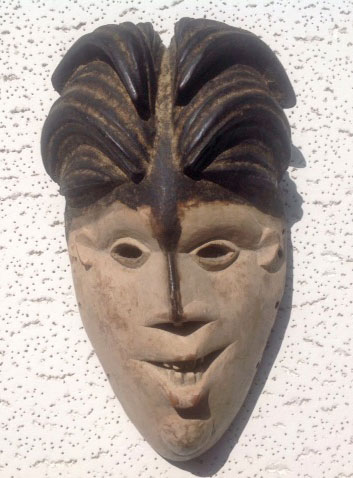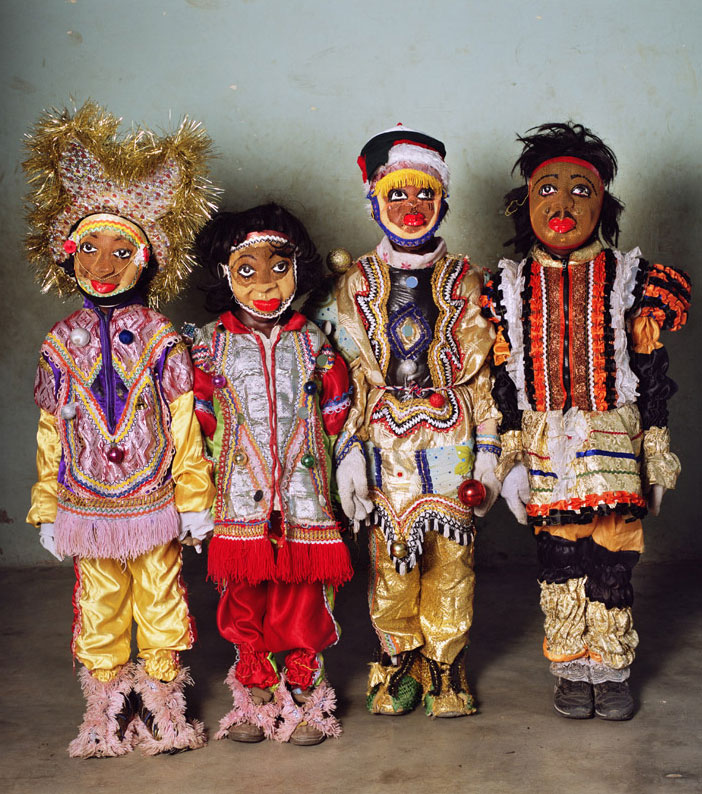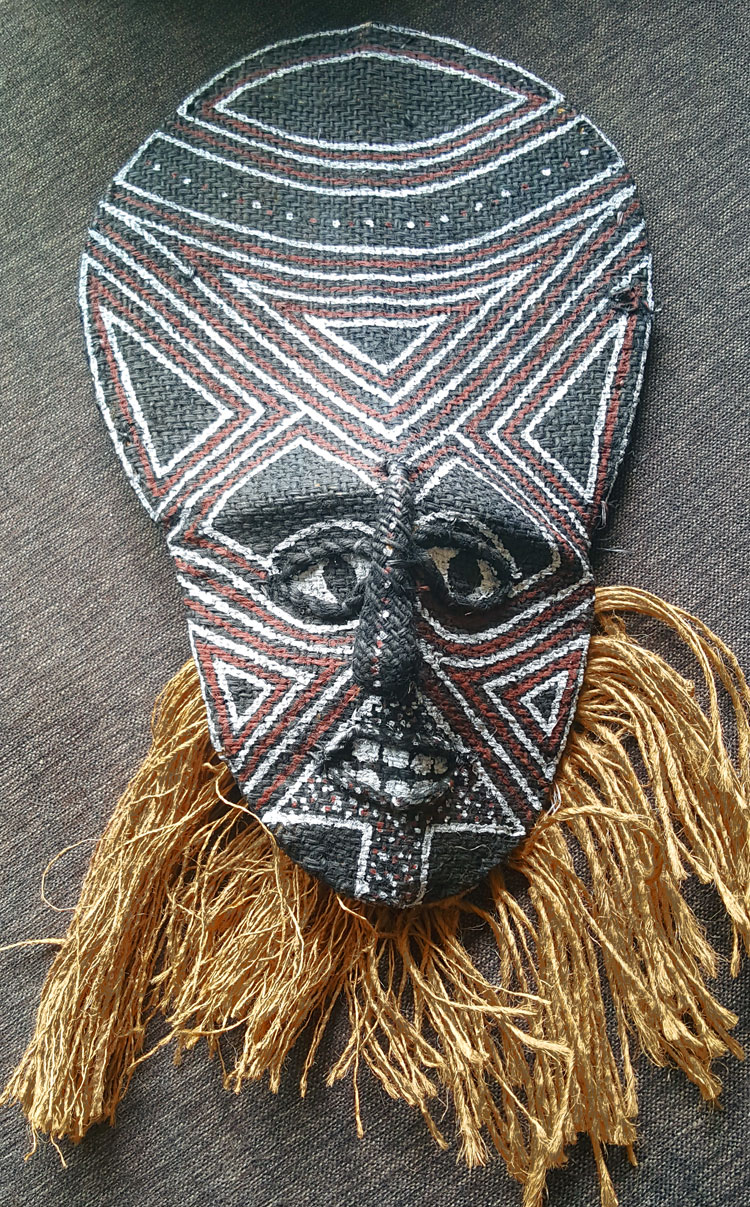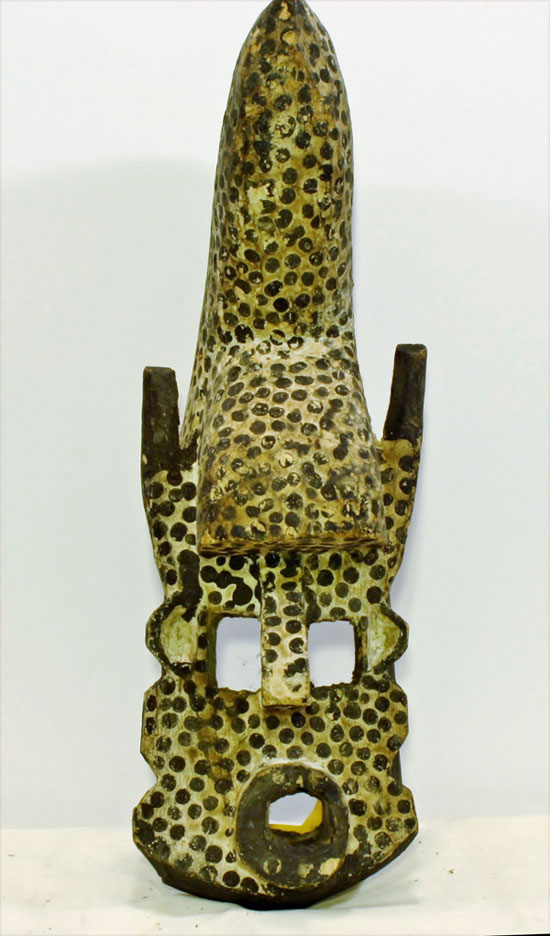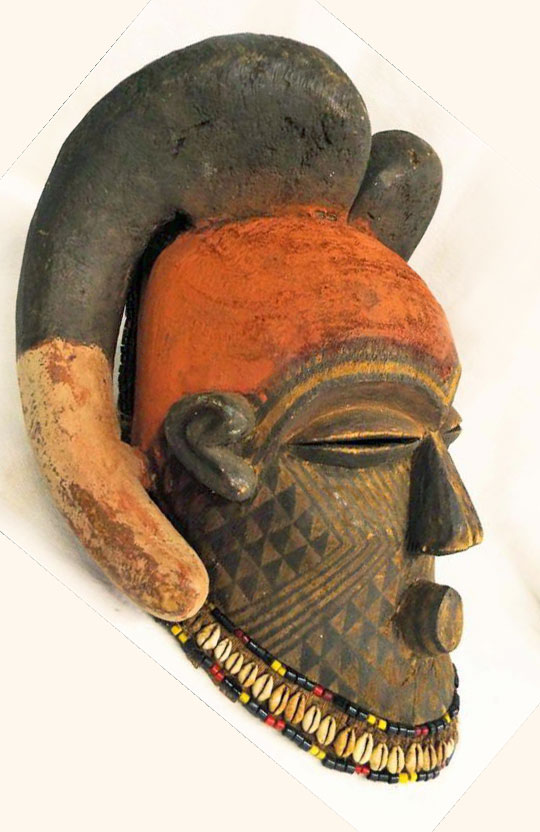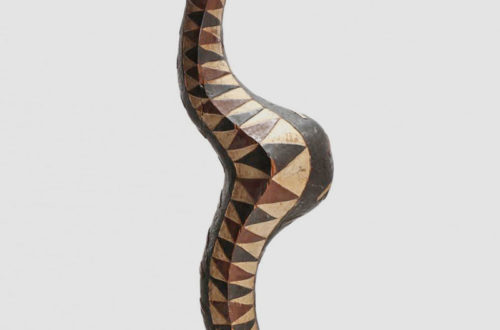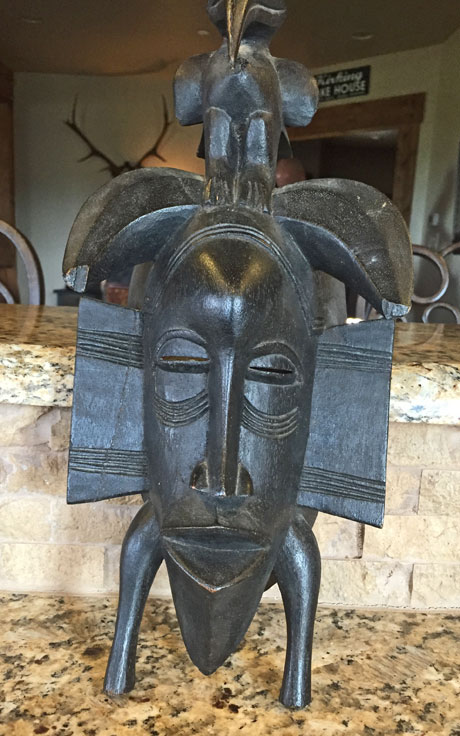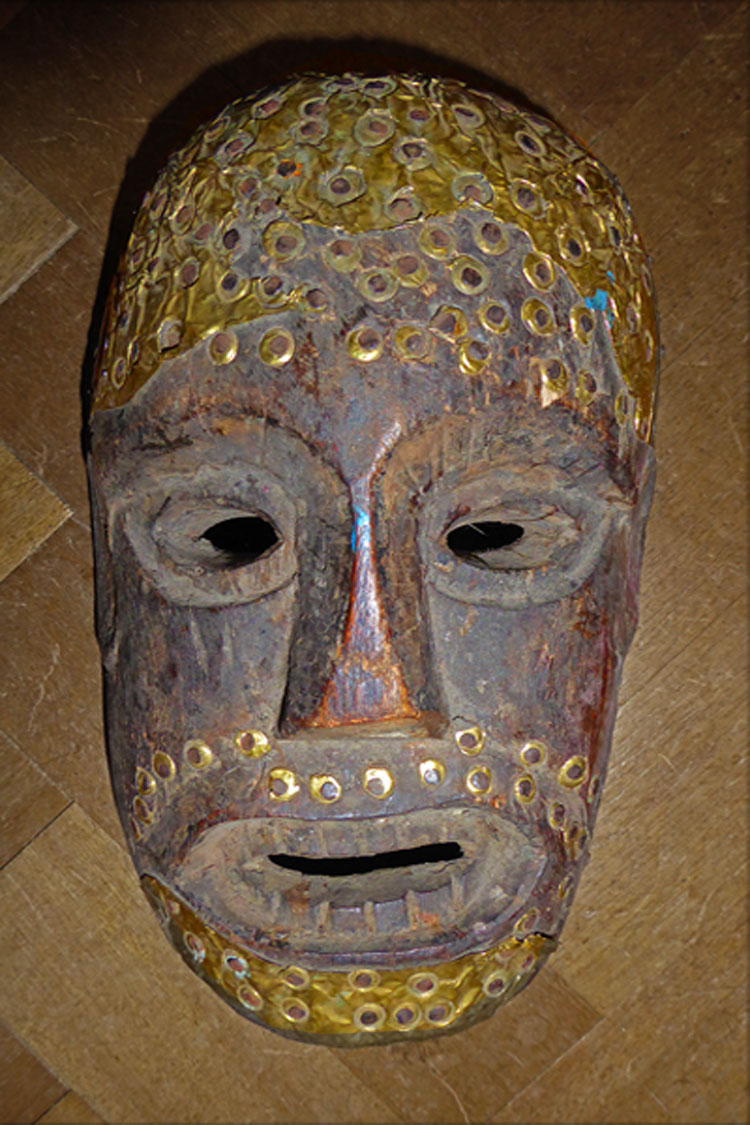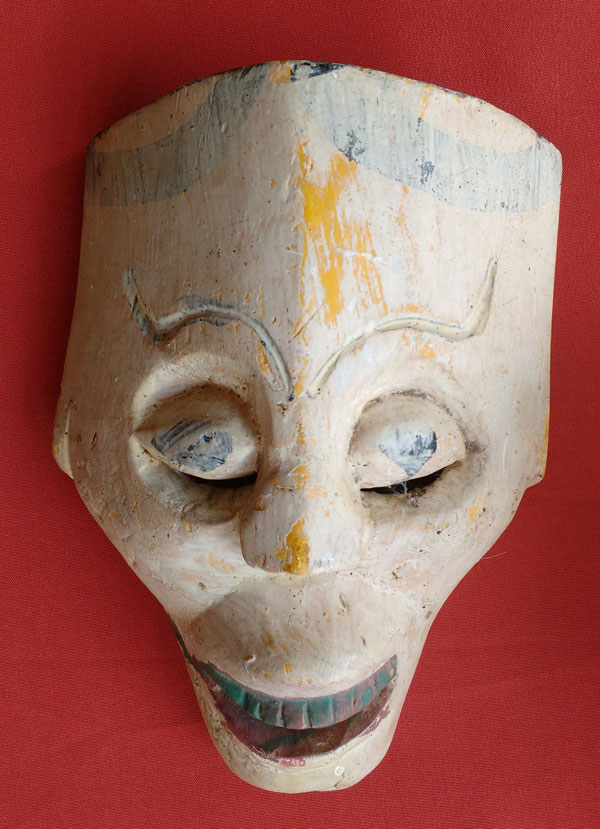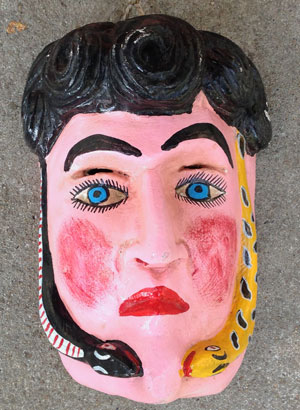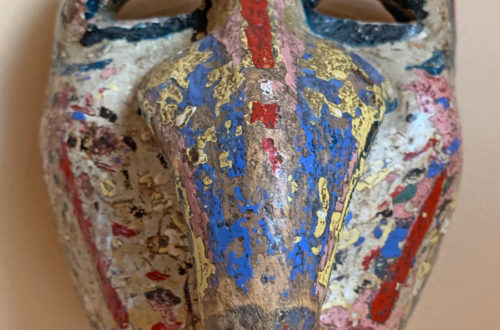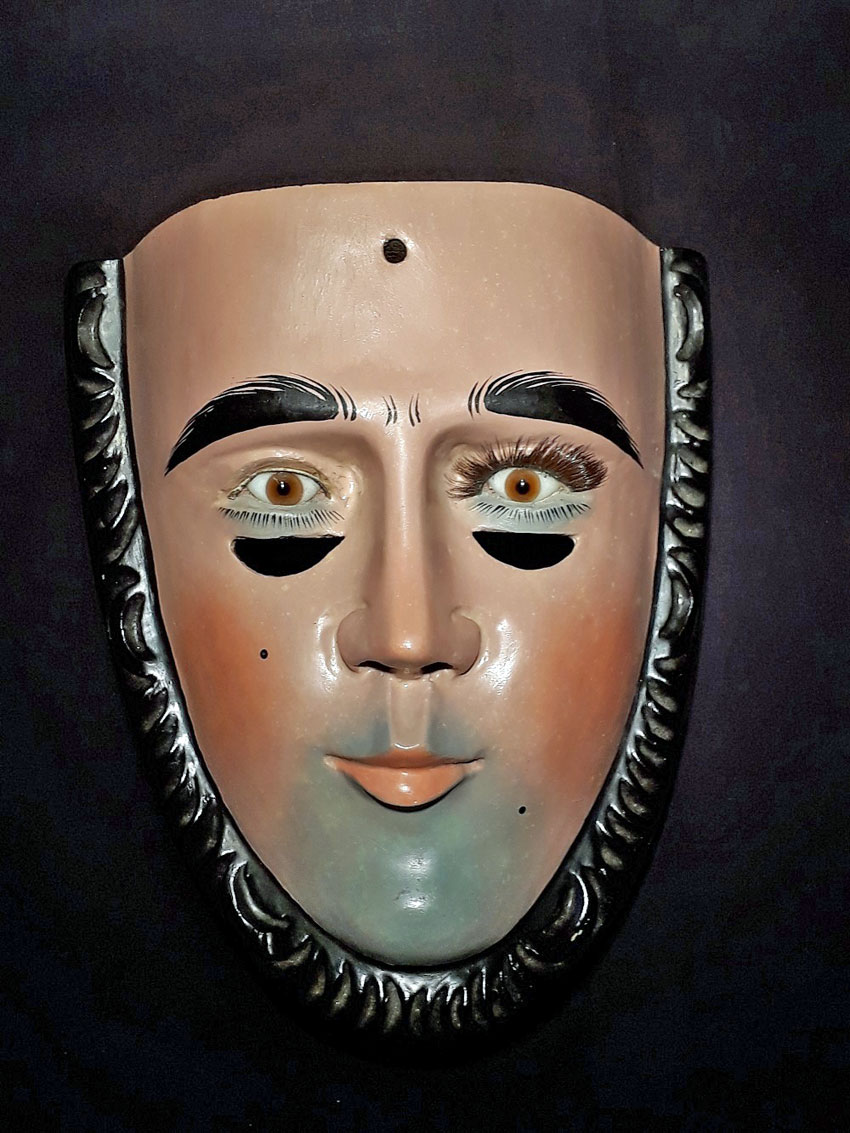Adam: I’m really very interested in a category of mask that isn’t hugely desirable to the collecting market. I like 20th century pieces that are brightly painted, but have been tribally used, particularly the Nyau masks of the Chewa, Guere masks and Igbo/Yoruba masquerade pieces. Me: Once I bought a collection of Chewa masks, but they are long gone. Four from that collection are on page 31 of my book, Masks of the World. This image of Elvis Presley is a Nyau mask from the Brooklyn Museum collection. Isn’t it fantastic!? The characters in Nyau Society performances often involves reverse role playing and the masks are sometimes humorous in nature.…
-
-
Excellent Gelede mask from Nigeria
Me: Before I post this mask you recently acquired, could you tell me more about it? Aaron: I really don’t know much. I bought it at an auction. It’s the normal size, but it hasn’t been artificially aged. It looks to be 30 years old or so, although who knows. The maker used an oil-based paint, which is pretty unusual in tourist masks but not too uncommon in masks for tribal use, I think. That’s about all I know, other than the general information about the Gelede ceremony from two excellent books, Henry Drewal’s “Gelede: Art and Female Power Among the Yoruba” and Babatunde Lawal’s “The Gelede Spectacle”. Me: Gelede…
-
Leather skull mask
Q: The one that looks like a skull is the one made from a hide. The attached braids and beads are very brittle. I know nothing about it. My Dad passed away 10 years ago and it was tucked away in a trunk. He loved Native American art and collected some pipes and other objects many years ago. I’m guessing this was one of his finds. I’d love to know the origin of it. Mostly I’m concerned about the condition and would like to see it restored or preserved. Marc, 991 A: This mask is too much of a mystery for me. I hope one of our visitors will have…
-
The wild and crazy Tastoanes
Q: The tastoanes masks are made by a pretty well-known guy in Tonalá, but they are made out of fired clay rather than leather. The first one (2a) is leather, but the second (3c) is ceramic. Enjoy! Aaron, 990 A: Look at the detail on this beautifully made ceramic mask. It is indeed a work of art. You can see two others from Santa Cruz de las Huerta, also in the state of Jalisco, by going to page 116 in the book Masks of the World. Typically these scary dance masks are made of strong leather that is coated with plaster and then painted. The colors are usually brighter than…
-
Masks of the World book for $9.97
You can have this excellent reference book on your smart phone for just $9.97. The pictures look just as good as the printed book. Here is a Mbangu mask from the Pende people of the Democratic Republic of Congo. It represents a hunter who has suffered a stroke from the curse of a sorcerer. Collectors call this a sickness or deformity mask. It is on page 17 of Masks of the World by Ibold & Yohn. You can buy the digital version here on the website or by going directly to Amazon.com. What a wonderful source of info when at an auction, thrift store, tourist shop, etc!
-
Old copper tourist mask
Q: I purchased this mask at a yard sale and paid $100. The seller was an antiques dealer and had several in his collection. He said this one was from Guerrero, Mexico, and made in the 1920s. I have several masks from all over the world, but mostly I just collect the ones that catch my eye. Since I love bats, I was attracted to this one right away. It is made of copper, with a worn burlap material on the back. It measures 12″ tall X 14.5″ wide X 5″. Ron, 988 A: Your information is correct. It is indeed an early 20th century mask from the Altamirano Region…
-
Colorful Mahakala from the Himalayas
Q: I was wondering if you can provide me with any information on this mask that I purchased in a collection of four masks. Like the others this one is marked on the underside. Russel, 987 A: This mask is very decorative, even if it isn’t well made. It is a traditional Mahakala from the Himalayan region, where it is quite common in Buddhist performances and for sale to tourists. You can find these easily and they are often quite cheap. C
-
Beautiful Igbo Maiden
Q: I bought this one from you a few years back. It has a chip broken off on the back. My guess is my cleaning service might be responsible for that…. Can’t be seen from the front. Mark, 986 A: Called an Okoroshi, this handsome mask represents a young woman from the Igbo people of Nigeria. Her coiffure in three parts is composed of rolled braids. But what is really special is her twisted smile. You rarely see one this amusing. Danced at the Okoroshi masquerade during the rainy season, is the opposite of the dark ugly males. I love it. B+
-
Kuba nyet mask
Q: I bought this mask for $10 from the Berner’s Auction Gallery in Springfield Ohio. I cannot identify it and believe it may be an Indonesian or Ghanian copy. It measures approximately 18″ long and has cowrie shells and beads in addition to the pigments. Could you help me identify it? Thank you so very much. Irene,985 A: This mask from the Kuba people in the Democratic Republic of Congo is generally called a nyet. Horns were added to a mask for the image of power and strength. It has a nice colorful appearance and is further embellished with beadwork and cowries. I think the masks is quite desirable even…
-
Strange Mexican mask
Q: I recently acquired three Mexican (?) masks from an estate sale. My understanding is that the collector had originally bought them in the 60’s, though I cannot confirm that, nor do I know the age of the masks at the time of purchase. Brian, 984 A: Thanks for sending the excellent photos. Two of the masks would be classified as Mexican decoratives, which means they were made for sale to tourists or art collectors. This one is more interesting. It is thinly carved, which is ideal for actual usage, but there are no holes for attachment to the dancer’s head. Some other questions… Why was it so quickly repainted?…
